Enhanced TDS
Identification & Functionality
- Additives Included
- Blend
- Yes
- Chemical Family
- Chemical Name
- Country of Origin
- Function
- Resin
- Plastics & Elastomers Functions
- Polymer Name
- Product Code
- MITM01808
- Single Ingredient
- No
- Technologies
- Product Families
Features & Benefits
- Labeling Claims
- Materials Features
Applications & Uses
- Plastics & Elastomers End Uses
- Plastics & Elastomers Processing Methods
- Markets
- Applications
- Processing Information
Injection Molding
- Typical melt temperature (Min / Recommended / Max) : 210°C / 230°C / 280°C.
- Mold temperature : 20 - 60°C
- Drying time and temperature (only necessary for bags opened for more than two hours) : 4-6 hours at 80-90°C.
Properties
Technical Details & Test Data
- Technical Data
Viscosity-shear Rate

Shearstress-shear Rate
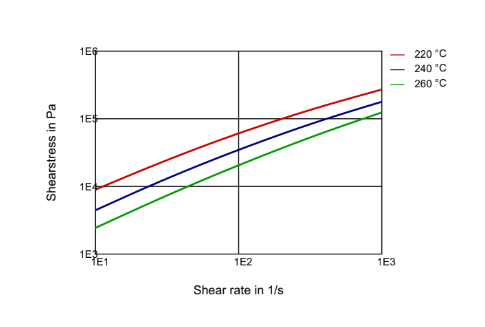
Dynamic Shear Modulus-temperature
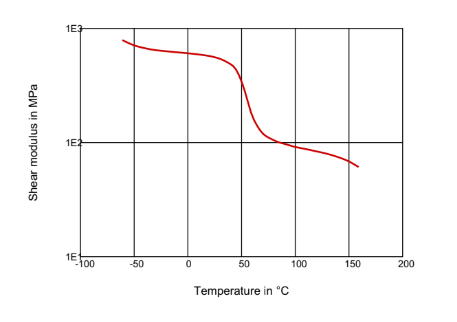
Stress-strain
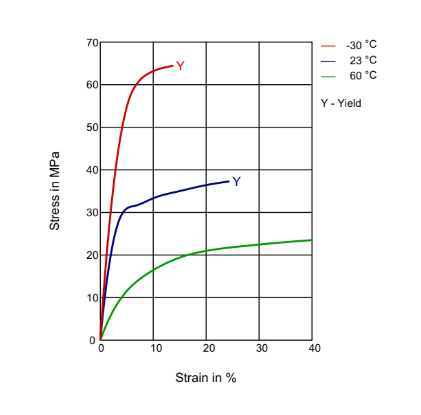
Secant Modulus-strain
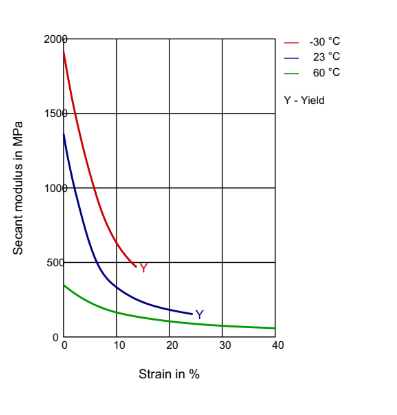
Stress-strain (Isochronous) 120°C
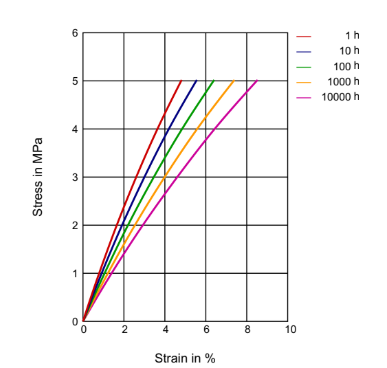
Creep Modulus-time 120°C
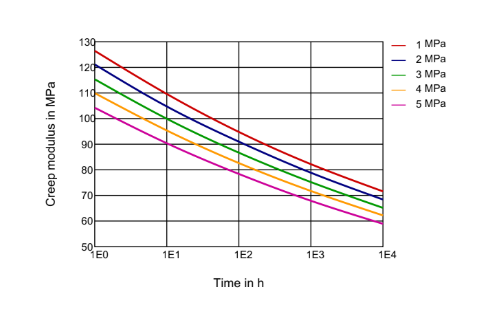
Packaging & Availability
- Packaging Type
Principal Information
- Group Principal Number
- S000003
- Principal
Other
- Color (SDS)
- Black
- Insoluble in (SDS)
- Water
- Item Number
- Other Hazards
- Processing may release vapors and/or fumes which cause eye, skin and respiratory tract irritation, The product, in the form supplied, is not anticipated to produce significant adverse human health effects. Contains high molecular weight polymer(s). Effects due to processing releases: Irritating to eyes, respiratory system and skin, Prolonged or repeated exposure may cause: headache, drowsiness, nausea, weakness, (severity of effects depends on extent of exposure).
- Protect from Freezing
- Yes
- Temperature Control
- Yes
- USA/DOT UN Number
- Not Applicable
- Electrical Properties
Value Units Test Method / Conditions Comparative Tracking Index 600.0 - IEC 60112 dry basis Dielectric Constant 4.0 - IEC 60250 at 100 Hz, dry Dielectric Constant 3.0 - IEC 60250 at 1MHz, dry Dielectric Strength 30.0 kV/mm kV/mm IEC 60243-1 dry basis Dissipation Factor 0.0598 tan δ tan δ IEC 60250 100Hz, dry Volume Resistivity 1000000000000.0 Ω-cm Ω-cm IEC 60093 dry basis - Mechanical Properties
Value Units Test Method / Conditions Charpy Impact Strength 6.0 kJ/m² kJ/m² ISO 179-1EA at 23°C, condensed, notched Charpy Impact Strength 7.0 kJ/m² kJ/m² ISO 179-1EA at -30°C, condensed, notched Hardness 72.0 Shore D Shore D condensed Hardness 72.0 Shore A Shore A ISO 868 condensed Nominal Strain at Break min. 50.0 % % ISO 527-1 condensed, at break, nominal Nominal Strain at Break min. 50.0 % % ISO 527-2 condensed, nominal Strain at Yield 45.0 % % ISO 527-1 condensed Strain at Yield 45.0 % % ISO 527-2 condensed Tensile Modulus 1500.0 MPa MPa ISO 527-1 condensed Tensile Modulus 1500.0 MPa MPa ISO 527-2 condensed Weld Load 2.16 kg kg ISO 1133 at 235°C - Physical Properties
Value Units Test Method / Conditions Density 1030.0 kg/m³ kg/m³ ISO 1183 dry basis Humidity Absorption 0.8 % % ISO 62 condensed Load/Unload Temperature 145.0 °C °C ISO 75-1 at 0.45 MPa, dry, deflection under load Load/Unload Temperature 50.0 °C °C ISO 75-1 at 1.80 MPa, dry, deflection under load Load/Unload Temperature 145.0 °C °C ISO 75-2 at 0.45 MPa, dry, deflection under load Load/Unload Temperature 50.0 °C °C ISO 75-2 at 1.80 MPa, dry, deflection under load Melt Volume-Flow Rate 36.5 cm³/10 min cm³/10 min ISO 1133 at 235°C Melting Point 188.0 °C °C ISO 11357-3 at 10°C/min Melting Point 188.0 °C °C ISO 11357-1 at 10°C/min Mold Shrinkage 0.9 % % ISO 2577 normal, dry Mold Shrinkage 0.9 % % ISO 2577 parallel, dry Mold Shrinkage 0.9 % % ISO 294-4 normal, dry Mold Shrinkage 0.9 % % ISO 294-4 parallel, dry Softening Point 160.0 °C °C ISO 306 at 50°C/h, 50N, dry Storage Temperature 140.0 °F °F Water Absorption 1.9 % % ISO 62 condensed - SDS Physical and Chemical Properties
Value Units Test Method / Conditions Autoignition Temperature (SDS) 788.0-842.0 °F °F Bulk Density (SDS) 550.0-650.0 kg/m³ kg/m³ Decomposition Temperature (SDS) min. 662.0 °F °F Density (SDS) 1.03 g/cm³ g/cm³ Lower Explosion Limit (SDS) 94.0 % % at 85⁰C Melting Point (SDS) 370.0 °F °F Specific Gravity (SDS) 1.03 - Water = 1 - Shelf Life & Stability
Value Units Test Method / Conditions Shelf Life 2.0 yr yr - Thermal Properties
Value Units Test Method / Conditions Coefficient of Thermal Expansion 0.000085 /K /K ISO 11359-1 dry, parallel Coefficient of Thermal Expansion 0.000085 /K /K ISO 11359-2 parallel, dry
